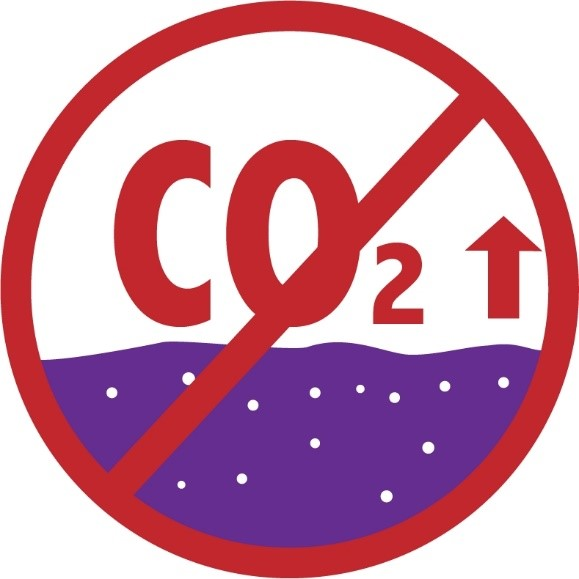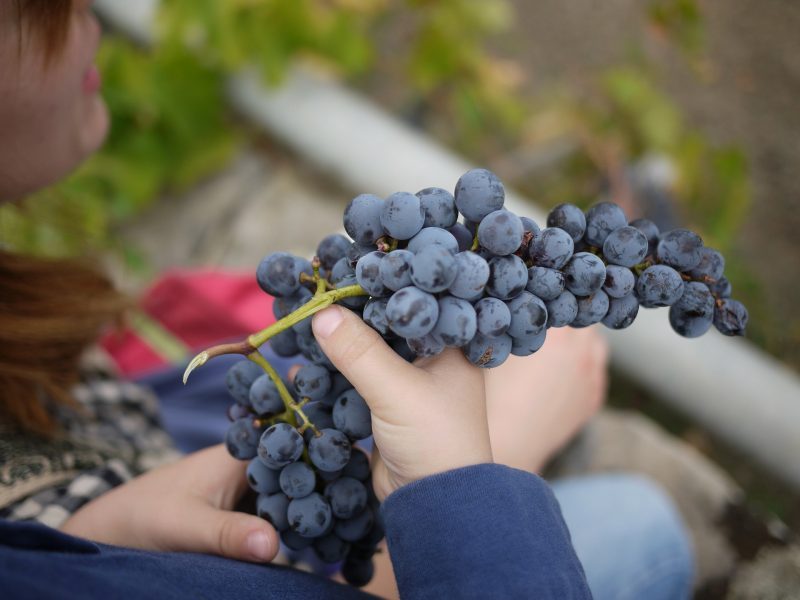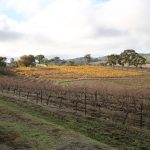Australian viticulture consultant Dr Richard Smart has a keen interest in helping the global wine sector mitigate its impact on climate change and asks why societal changes have been so dramatic and widespread in response to COVID-19, and yet warnings about the impending climate crisis have been ignored by governments and the population at large for over 30 years? He also offers suggestions on what the wine sector can do to mitigate its climate change impacts.
What a crazy and yet momentous year 2020 has turned out to be, so far less than half spent. Accordingly, it will be recorded in history as a ‘tipping point’ year for human society on a couple of counts.
In early January the world’s attention was drawn to wildfires in Australia, with plenty of graphic TV images of a continent apparently burning. These were to be among the largest wildfires in Australia’s history, apocalyptic in extent. Scientists assured the nation and the world that the cause was the changing climate, with record high temperatures, a severe drought and abnormal developments in adjacent oceans.
High temperature records were not restricted to Australia. The northern Hemisphere winter had record high temperatures on land, and, on Seymour Island, Antarctica, the highest ever temperature of 20.8 ⁰C was recorded on February 9th. One wonders what the northern hemisphere summer will yet bring.
Meanwhile, an unknown corona virus escaped from the animal kingdom and began to kill humans in China. It spread around the world by man, travelling mostly by air and sometimes cruise ships; over the next three months the very nature of global society changed.
Much of the Western world is now in ‘lockdown’ with people obliged to remain at home and many losing employment as businesses close. Governments hoping to avoid economic recession are handing out money to individuals and companies on an unprecedented scale. Some sectors, such as airlines, tourism and hospitality, are especially hard hit.
Of the first crisis, that of climate change, neither history nor early pre-history offers a precedent. Carbon dioxide (CO2) and methane, so-called ’greenhouse gases’, have varied in the earth’s atmosphere in the geological past and, at high levels, have caused warming. These changes were ’natural’ causes; the present record high levels of atmospheric CO2 are due to man’s activity in burning fossil fuels since the 1800s in general, and since 1950 in particular. These fossil fuels were sequestered in the earth over geological periods of many millions of years, but are being released in much less than, say, 250 years, so the atmospheric concentration is dramatically increasing.
The ‘new normal’
The term new normal has been recently used to describe the way people in Western societies have adjusted their living with COVID-19, using ’lockdown’ to achieve ’social isolation’. This involves staying at home, adults and children alike, and trying to continue life as usual. Adjustments have necessarily taken place, with schools and universities offering online learning, employees working from home where possible and travel restrictions among those adjustments.
The new normal and climate change mitigation
I wonder, will all of this be forgotten when the coronavirus is no longer so threatening? Will society remember some of these adjustments into the future, and question whether so much of the car and air travel that was common before COVID-19 was really necessary, for example? Recent improvements in air quality and reductions in CO2 emissions have been noted in many locations. COVID-19 lifestyle adjustments have resulted in lower carbon emissions, more than any amount that environmental activism and education has achieved in the past.
My consulting business Smart Viticulture has changed dramatically due to carbon consciousness and now COVID-19. In January I had virtual consulting in Romania, and will be in New Zealand vineyards virtually this month; and will be offering virtual trunk disease field demonstrations in Victoria this winter.
Why have societal changes been so dramatic and widespread in response to COVID-19, and yet warnings about the impending climate crisis have been ignored by some governments, and the population at large, for over 30 years? The answer is, of course, obvious.
On one hand we have a small group of not well-known scientists offering warnings of a future crisis, supported by a small but vocal group of environmentalists (and school children!). While some governments may have been sympathetic, some notable exceptions have not been, none more outstanding than that of Australia.
Contrast this, if you will, with the response to the corona virus. Governments have slavishly followed the advice of medical scientists, some more quickly than others. And some in the medical fraternity have portfolios in government, or other positions of great influence (I dare say that climate scientists are very envious of this power!). Add to this the daily pronouncements of politicians engendering fear in the populace, and there is little doubt of resulting community awareness and response.
What hope is there of the world to overcome the climate crisis? Will the Australian wine sector contribute to the mitigation effort?
Undoubtedly, there would be negative reactions to admitting and dealing with another ’crisis’ so soon after COVID-19 fades. But, hopefully many will remember the way the virus was defeated by governments large and small, working at many levels, following specialist advice, encouraging the populace to work together.
Grape and wine producers and wine consumers might contemplate the ‘crisis transition’ and consider if they support environmental concerns and climate change mitigation. Today’s more environmentally-aware consumers will use their purchasing spend to show support and encouragement to deserving producers.
For my part, I can see several ways forward to achieve this.
I should firstly and loudly raise the issue of the misnomer, so-called ‘organic’ production. Many consumers consider that while such producers are driven by environmental conservation, and that this includes climate change mitigation. This is not the case. In fact studies have shown that organic viticulture has a larger carbon footprint than conventional viticulture. To be certified organic requires that the grower does not use ’synthetic’ (modern) pest, disease and weed prevention, but instead uses those that are older and frequently less efficient, hence more tractor time and diesel fuel creating a larger carbon footprint.
The label ‘sustainable’ is preferred, although my suggestion is that producers who practice climate change mitigation should be identified as such. An international logo would be helpful, with one suggestion below. The term sustainable is not specific enough in my opinion, and being so general lacks climate change mitigation emphasis.

How can the grape and wine sector help mitigate climate change? It should use renewable energy wherever possible. Waste biomass (vineyard prunings, stalks, skins, seeds and pulp) from winery operations can be used to produce energy and heat, so avoiding the purchase of fossil-fuel based grid energy; carbon footprint ’heavy’ glass bottles can be replaced by more environmentally-friendly packaging like cardboard tetra paks, standup pouches, cans and flatter profile PET bottles. I am involved with academic marketing colleagues and environmentalists, retailers and producers in a proposed consumer acceptance study of alternate packaging planned for late 2020.
There remains some confusion about carbon accounting however, which creates loopholes for CO2 emissions to the atmosphere by wineries. They relate to so called “biogenic carbon’’, or the short term carbon cycle. To my mind this is a confusion of convenience; it is a means that allows wineries to continue to directly pollute the atmosphere with CO2 by not capturing fermentation CO2. Technology exists in Europe (why not in Australia?) to capture these gases; perhaps it is seen as a cost savings by wineries not to install it, preferring to continue to treat the atmosphere as a sewer for CO2 just like power stations.
The accounting justification is that because vineyards take CO2 from the atmosphere in photosynthesis, then all products of that photosynthesis, including the fruit and its sugar, need not be counted when they, in turn, create CO2. So, following this accounting trick allows wineries to release CO2 from fermentation to the atmosphere, and to not worry about it.
Perhaps public outrage may change their minds. What if an environmental protester flew a drone over wineries mid-vintage, collecting air samples to measure the CO2 content, and released the readings to the popular press? Might wine consumers and the general public be horrified at this practice?
While one crisis may be partially passed in its effect by the end of 2020 or thereabouts, another, and the greater one, still hangs over our heads, although it does not threaten our lives so directly nor imminently. It will however impact our society to a much greater and more permanent extent than has COVID-19. The good news is that it can be avoided by action in the very near future.
The New Zealand wine industry has recently announced a goal of being net carbon zero ahead of the 2050 regulatory deadline. Let the Australian grape and wine sector follow, to do its part to help mitigate the climate crisis, and maybe encourage the international wine sector to follow.
Are you a Daily Wine News subscriber? If not, click here to join our mailing list. It’s free!





















